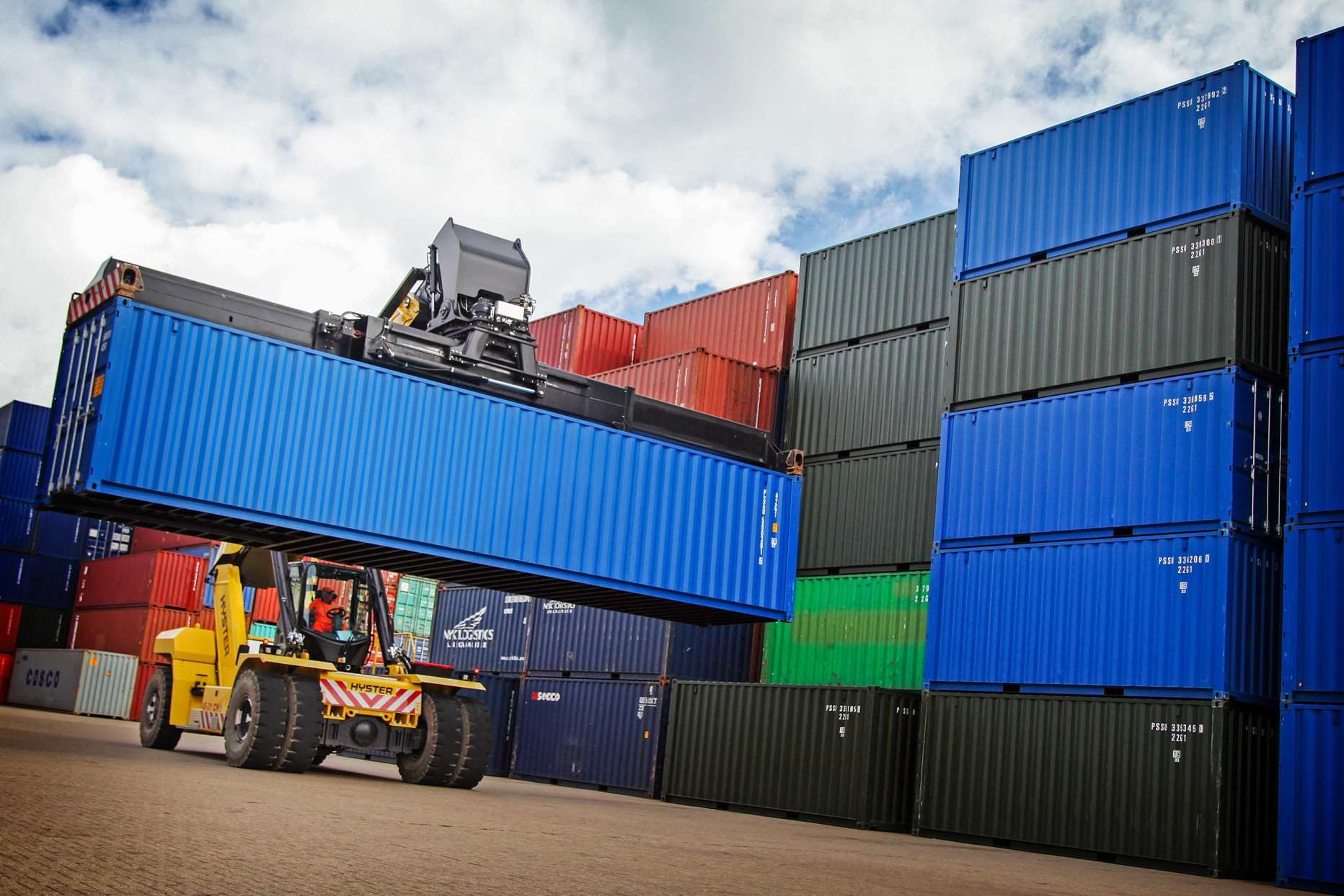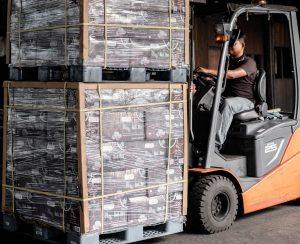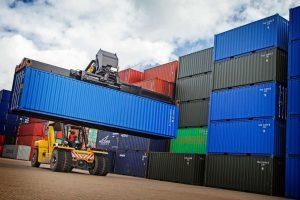Shipping charcoal internationally is a crucial yet complex process that exporters must navigate carefully. As global demand for charcoal continues to rise—particularly for grilling, industrial use, and water filtration—businesses must understand the logistical challenges, regulations, and best practices to ensure smooth shipments.
Exporting charcoal involves more than just packing and sending; it requires compliance with strict international regulations, efficient cost management, and sustainable shipping solutions. Mishandling charcoal shipments can lead to customs delays, safety hazards, and unnecessary expenses. That’s why it’s essential to stay informed about the latest rules, optimal shipping routes, and eco-friendly methods to reduce environmental impact.
In this guide, we’ll explore:
- Key regulations for international charcoal shipping
- Safety and compliance measures to prevent fire hazards
- Eco-friendly packaging and sustainable transport practices
- Cost-effective shipping strategies to maximize profitability
- Global shipping routes and how they affect export logistics
- Common challenges in charcoal shipping and how to overcome them
You’ll have a complete understanding of how to efficiently and safely ship charcoal across borders while keeping costs in check and minimizing environmental impact.
Understanding Charcoal Shipping Regulations
Shipping charcoal internationally requires careful adherence to various regulations to ensure safety, compliance, and smooth customs clearance. Since charcoal is a flammable material, many countries impose strict rules on its transportation. Exporters must be aware of international shipping standards, import/export laws, and labeling requirements to avoid delays or penalties.
International Shipping Rules and Compliance
Each country has its own set of regulations governing the import and export of charcoal. However, some common international standards apply:
- Harmonized System (HS) Codes: Charcoal is classified under HS Code 4402, which is used globally for customs processing.
- Export Documentation: Essential paperwork includes a Bill of Lading, Packing List, Commercial Invoice, and Certificate of Origin to verify the shipment’s legitimacy.
- Restricted or Banned Shipments: Some countries restrict charcoal imports due to environmental concerns. For example, the European Union (EU) has specific sustainability requirements, while China imposes strict regulations on certain types of charcoal.
- Customs and Duties: Import taxes vary by region. The United States and European markets impose different tariff rates depending on the type of charcoal (lump charcoal, briquettes, activated charcoal).
Failing to comply with these regulations can lead to shipment rejections, fines, or costly delays. It’s essential for exporters to stay updated on the latest trade laws in their target markets.
Safety Regulations for Charcoal Shipments
Since charcoal is a flammable solid, it falls under hazardous material (HAZMAT) classifications in many jurisdictions. Exporters must follow strict safety guidelines to prevent fire risks during transport.
- UN Classification for Dangerous Goods:
- Charcoal is classified under UN 1361 (Charcoal, Not Activated) and UN 1362 (Activated Charcoal).
- Depending on the moisture content and packaging, some charcoal types may be considered self-heating substances, increasing fire hazards.
- Packaging and Labeling Requirements:
- Charcoal must be packed in sealed, fire-resistant bags or containers that prevent exposure to air.
- Clear labeling is required, indicating “Flammable Solid” and the UN number.
- Some shipping companies may require additional ventilation holes in containers to prevent heat buildup.
- Transportation Mode Restrictions:
- Air Freight: Many airlines restrict charcoal shipments due to fire risks. If allowed, shipments must follow IATA Dangerous Goods Regulations (DGR).
- Sea Freight: Most exporters use ocean shipping to transport charcoal in bulk, adhering to International Maritime Dangerous Goods (IMDG) Code.
- Land Transport: Trucks transporting charcoal must comply with local road safety laws, often requiring fireproof tarps and ventilation measures.
Understanding and following these regulations is crucial to ensuring your charcoal shipments are not only compliant but also safe and efficient.
Sustainable and Eco-Friendly Charcoal Shipping Practices
As global environmental concerns grow, businesses involved in charcoal export must adopt sustainable shipping practices to minimize their carbon footprint. This involves eco-friendly packaging, responsible sourcing, and reducing emissions in transportation. Not only does sustainability benefit the environment, but it also enhances brand reputation and compliance with international regulations.
The Role of Packaging in Sustainable Shipping
Packaging plays a critical role in the safety and sustainability of charcoal shipments. Traditional packaging methods often use plastic bags or non-recyclable materials, which contribute to environmental pollution. Switching to eco-friendly alternatives can reduce waste and appeal to environmentally conscious buyers.
Best practices for sustainable charcoal packaging:
- Biodegradable or Recyclable Materials
- Use kraft paper bags, recycled cardboard, or compostable packaging instead of plastic.
- Laminated paper bags with moisture-resistant linings can maintain charcoal quality while being eco-friendly.
- Bulk Packaging to Reduce Waste
- Instead of small individual bags, use large bulk containers or jumbo bags to cut down on excess materials.
- Bulk shipping is also more cost-effective, as it reduces the number of packaging units per shipment.
- Minimalist Design with Water-Based Inks
- Avoid excessive printing or synthetic coatings that make packaging non-recyclable.
- Use soy-based or water-based inks to ensure packaging remains environmentally friendly.
Reducing Carbon Footprint in Charcoal Transport
Shipping charcoal internationally involves long-distance transportation, often via cargo ships, trucks, or airplanes, all of which contribute to greenhouse gas emissions. Implementing carbon-reducing strategies can make charcoal shipping more sustainable.
Ways to reduce emissions in charcoal shipping:
- Optimize Shipping Routes
- Use direct shipping lanes whenever possible to minimize fuel consumption.
- Partner with freight companies that utilize low-emission vessels or fuel-efficient transport methods.
- Consolidate Shipments
- Avoid half-empty containers by consolidating multiple orders into full-load shipments.
- Work with logistics providers that offer group shipping to maximize cargo space.
- Choose Sustainable Shipping Partners
- Select shipping companies that invest in carbon offset programs or eco-friendly fuel alternatives.
- Some carriers offer green logistics solutions, such as using biofuels or electric transport options.
- Encourage Responsible Sourcing
- Ensure the charcoal is sourced from sustainably managed forests.
- Certifications like FSC (Forest Stewardship Council) or Rainforest Alliance indicate responsible production.
Shipping Costs and How to Optimize Them
Managing shipping costs is crucial for charcoal exporters looking to maintain profitability while ensuring smooth international deliveries. Due to its bulk nature, flammability, and weight, charcoal can be expensive to transport. Understanding the factors that affect shipping costs and implementing cost-saving strategies can significantly improve efficiency and reduce expenses.
Cost Factors in Charcoal Export
Several key factors influence the cost of shipping charcoal internationally:
- Freight Mode
- Sea Freight: The most common method for bulk charcoal exports, offering lower costs but longer transit times.
- Air Freight: Faster but significantly more expensive, often used for high-value or urgent shipments.
- Land Transport: Used for regional exports but subject to road regulations and fuel price fluctuations.
- Container Type and Size
- 20-ft vs. 40-ft Containers: Larger containers offer better cost efficiency per unit but require higher volume orders.
- Dry Bulk vs. Palletized Shipments: Bulk shipping can be cheaper but may require special handling.
- Customs Duties and Tariffs
- Import duties vary by country and depend on whether the charcoal is lump charcoal, briquettes, or activated charcoal.
- Some markets, like the European Union, impose additional environmental or sustainability-related taxes.
- Storage and Handling Costs
- Warehousing fees apply if shipments need to be stored at ports before customs clearance.
- HAZMAT (hazardous material) handling fees may be required due to charcoal’s flammable classification.
Best Practices for Cost-Efficient Shipping
Reducing shipping costs without compromising efficiency requires strategic planning and optimization.
- Optimize Packaging and Load Efficiency
- Maximize container space by using compact and stackable packaging.
- Use bulk packaging instead of smaller bags to reduce packaging costs and improve weight distribution.
- Choose the Right Shipping Routes and Partners
- Compare freight forwarders to find the most competitive rates.
- Utilize consolidation services to combine smaller shipments into a single container to reduce per-unit costs.
- Leverage Trade Agreements and Duty Exemptions
- Research free trade agreements (FTAs) that may reduce tariffs for exporting to specific countries.
- Utilize bonded warehouses to delay or avoid duty payments until the product is sold.
- Plan for Seasonal Rate Fluctuations
- Shipping rates often increase during peak seasons (e.g., summer for BBQ charcoal sales).
- Booking shipments in advance or securing long-term contracts with freight providers can lock in lower rates.
Best Global Shipping Routes for Charcoal
Choosing the right shipping routes is essential for charcoal exporters aiming to optimize costs, reduce transit times, and access key global markets. Understanding major charcoal-importing regions and the most efficient shipping lanes helps businesses streamline their logistics and enhance profitability.
Major Markets for Charcoal
Charcoal demand is strong in various regions, each with its own regulatory requirements and preferred shipping routes.
1. Europe (EU and UK)
- High Demand: The European market is one of the largest importers of charcoal, particularly for grilling and industrial applications.
- Key Entry Ports:
- Rotterdam, Netherlands – A major hub for European distribution.
- Hamburg, Germany – Handles bulk charcoal shipments efficiently.
- Antwerp, Belgium – Offers direct routes to multiple EU countries.
- Shipping Considerations:
- The EU has strict sustainability regulations, favoring FSC-certified charcoal.
- Import duties may vary, depending on the country and charcoal type.
2. North America (USA & Canada)
- High BBQ Demand: The US has a large consumer market for lump charcoal and briquettes, especially during summer months.
- Key Entry Ports:
- New York & Savannah, USA – Major entry points for bulk imports.
- Houston, USA – Ideal for charcoal entering via the Gulf of Mexico.
- Vancouver, Canada – A gateway for distribution across Canada.
- Shipping Considerations:
- US regulations classify charcoal as a hazardous material (HAZMAT), requiring strict packaging and labeling.
- The US imposes tariffs on certain imported charcoals, depending on origin.
3. Middle East
- Growing Market for Shisha Charcoal: Countries like Saudi Arabia, UAE, and Qatar have high demand for natural and compressed charcoal used in shisha (hookah) smoking.
- Key Entry Ports:
- Jebel Ali, UAE – One of the busiest shipping hubs in the Middle East.
- Dammam, Saudi Arabia – Key port for distribution within Saudi Arabia.
- Shipping Considerations:
- Many Middle Eastern countries prefer high-quality hardwood charcoal.
- Some nations have import bans on certain types of charcoal due to environmental concerns.
4. Asia (China, Japan, South Korea)
- Strong Demand for Industrial & Cooking Charcoal: Asia has a rising demand for activated charcoal (for water filtration) and binchotan-style charcoal (used in grilling).
- Key Entry Ports:
- Shanghai & Guangzhou, China – High demand for industrial charcoal.
- Tokyo, Japan – A major destination for premium binchotan charcoal.
- Busan, South Korea – An important hub for charcoal imports.
- Shipping Considerations:
- China has strict import regulations, often requiring phytosanitary certificates.
- Japan prefers high-carbon-content charcoal for traditional grilling methods.
Shipping to Emerging Markets
In addition to major buyers, new markets are expanding their charcoal imports, offering fresh opportunities for exporters.
- South America (Brazil, Argentina, Chile) – Increased demand for BBQ charcoal and sustainable fuel alternatives.
- Africa (South Africa, Egypt, Nigeria) – Emerging consumer markets with growing charcoal demand for cooking and industrial use.
- Oceania (Australia & New Zealand) – Steady market for grilling charcoal, often importing from Southeast Asia.
Overcoming Common Challenges in Charcoal Shipping
Exporting charcoal comes with several logistical and regulatory hurdles that can cause delays, added costs, or even shipment rejections if not properly managed. Understanding these challenges and implementing proactive solutions can help ensure smooth and efficient deliveries.
Customs Delays
Customs clearance is one of the biggest bottlenecks in international shipping. Many countries have strict import regulations for charcoal, leading to unexpected hold-ups at ports.
Causes of Customs Delays:
- Incomplete or incorrect documentation (e.g., missing HS code, incorrect invoice details).
- Failure to meet local regulations (e.g., sustainability certifications in the EU).
- Random inspections for hazardous goods classification.
How to Avoid Customs Delays:
- Ensure all export documents are accurate and complete, including the Bill of Lading and Commercial Invoiceif required.
- Work with experienced customs brokers who understand the specific regulations of your target markets.
- Use HS Code 4402 correctly to classify charcoal shipments and avoid mislabeling issues.
- Check destination country import rules in advance and secure necessary permits before shipping.
Damaged Shipments
Charcoal is a fragile product that can break down into fine dust if not handled properly. Physical damage during transit can reduce product quality, leading to customer dissatisfaction and financial losses.
Common Causes of Charcoal Damage:
- Poor packaging that fails to protect against compression and impact.
- Improper stacking inside containers, causing crushing of bottom layers.
- Excess moisture exposure, leading to reduced burn efficiency.
Solutions for Protecting Charcoal Shipments:
- Use durable, moisture-resistant packaging, such as multi-layer kraft paper bags or polypropylene woven bags.
- Stack bags strategically to distribute weight evenly and prevent crushing.
- Ensure proper ventilation to reduce heat buildup inside containers, especially for large shipments.
- Use shock-absorbing pallets to minimize vibrations during transport.
Flammable Hazards and Safety Risks
Charcoal is classified as a flammable solid, meaning improper handling can pose fire hazards. Some types of charcoal are prone to self-heating, especially when packed in airtight conditions.
How to Mitigate Fire Risks:
- Use fire-resistant packaging that complies with UN 1361 or UN 1362 safety standards.
- Avoid over-packing containers to allow for proper air circulation and heat dissipation.
- Label shipments properly with hazard markings to ensure safe handling by transport companies.
- Choose shipping routes carefully—avoid extreme temperature conditions that could trigger combustion.
Unstable Freight Costs and Shipping Delays
Charcoal exporters often face fluctuating freight rates and delays due to external factors like fuel price changes, port congestion, or geopolitical disruptions.
How to Manage Shipping Costs and Avoid Delays:
- Book shipments in advance to secure stable freight rates.
- Use a mix of carriers to mitigate risks associated with port congestion or limited vessel availability.
- Track shipments in real-time using digital logistics platforms to anticipate and respond to delays.
- Consider alternative ports if primary ports face congestion or policy restrictions.
Conclusion
Successfully shipping charcoal internationally requires a deep understanding of regulations, logistics, and cost-saving strategies. From complying with international shipping laws to choosing the best packaging and transportation methods, exporters must navigate a range of challenges to ensure smooth and efficient deliveries.
Key takeaways from this guide include:
- Regulatory Compliance: Understanding international shipping laws, safety regulations, and customs procedures is essential to avoid delays and legal issues.
- Sustainable Shipping Practices: Using eco-friendly packaging and carbon-conscious transportation helps businesses reduce environmental impact and align with global sustainability goals.
- Cost Management: Optimizing freight choices, consolidating shipments, and planning for seasonal rate fluctuations can significantly reduce shipping expenses.
- Global Shipping Routes: Identifying the most efficient and profitable markets, such as Europe, North America, and the Middle East, ensures a strategic export approach.
- Overcoming Common Challenges: Addressing customs delays, preventing shipment damage, mitigating fire risks, and managing fluctuating freight costs improves overall supply chain efficiency.
As demand for charcoal continues to grow globally, businesses that streamline their shipping processes and adopt sustainable practices will be better positioned for long-term success. By staying informed and proactive, exporters can ensure cost-effective, secure, and environmentally responsible charcoal shipments.




